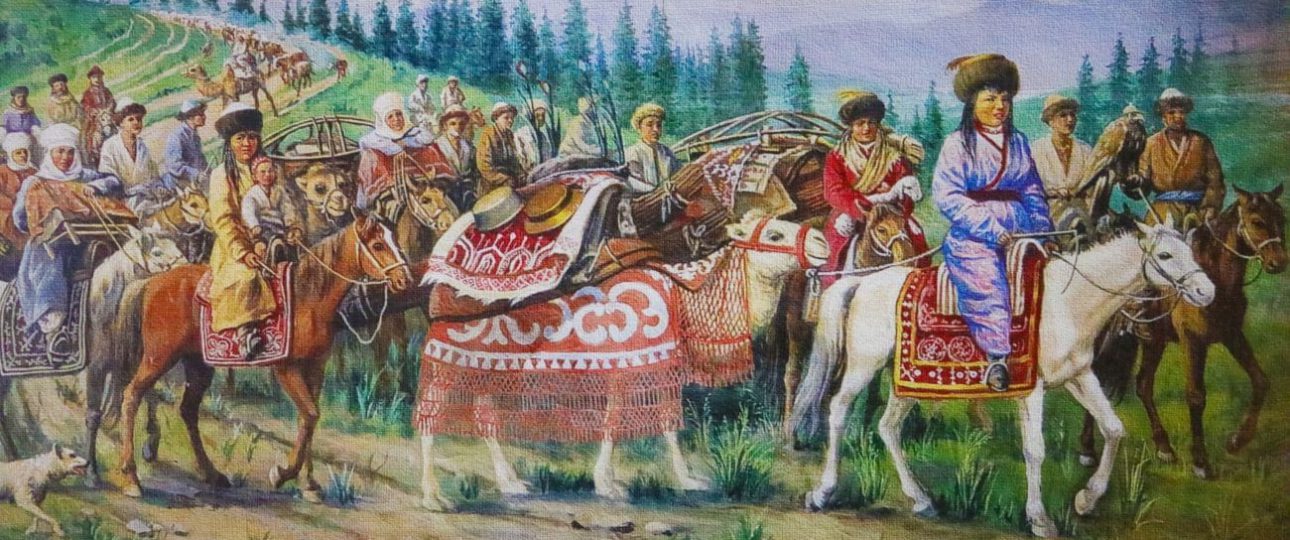First predecessors of Homo sapiens – Neanderthal and Pithecanthropus are known to have resided in the mountains of Mangystau and Karatau (Zhambyl region) and northern Balkhash. Millions of years ago people began to develop fertile land, rich with the help of wild animals in the territory of modern Kazakhstan.
Prehistoric Bronze Age cultures which extended into the region which includes the Afanasevo, the Srubna, and the Andronovo.
People have resided in Kazakhstan since the Lower Paleolithic, generally pursuing the nomadic pastoralism for which the region’s climate and terrain are suitable.
Between 500 BC and 500 AD, Kazakhstan was home to the Huns and the Saka, in early nomadic warrior cultures.
The archaeologists confirmed that the tribes in the northwest of Kazakhstan tamed a wild shepherd dog, camel, mountain sheep, mastered the horse breeding, learned to make various items from stone, copper, clay, and bone as early as in IV-III millennium BC.
History Of The 1 Millennium :
The early Turkic tribal union started (In the middle of the 1st millennium), to form on the region of the Mongolian mountains to the Caspian Sea, which ultimately leads to the development of statehood. Arabs introduced the Islamic religion to the Turkic tribes, as well as the integrated model of writing. During this period many Turkic states were replacing each other one after another: Karakhanid, Oguz, Kipchak, Turgesh, Karluk, etc.
Over time, the Arabic script completely replaced the traditional ancient Turkic runic script.
Golden Horde :
The province of Kazakhstan (Eastern Dasht-i-Kipchak), part of the territory of Khorezm and Western Siberia became part of the Golden Horde – the state founded by Batu (grandson of Genghis Khan).
The vast majority of the Horde was representatives of the Turkic tribes, such as the Naiman, Kipchak, Kangly, and KerayitKonyrat.
Kazakh Khanate :
While the era of ZhetyZhargy, Tauke Khan, the code of laws of the Kazakh Khanate was adopted and utilized.
Prominent public figures, scientists and thinkers – Tole bi, and KazybekAiteke bi participated in its preparation.
In the eighteenth century, Kazakh Khanate was crumbled under the onslaught of Jungars but retained its territorial division into three Juz – Middle, Senior, and Younger.
Despite the military power of the enemy, in separate battles, Kazakh soldiers were able to inflict considerable damage to Junggar army.
Kazakhstan During Soviet Period :
The invention of the military polygon of Baikonur (1955) for ballistic missile tests began in Kazakhstan. After that, it has become the main spaceport of the planet.
For more than half a century, Baikonur remains one of the leading space centres, annually carrying out dozens of manned rocket launches.
Independent Kazakhstan :
When USSR failed, Kazakhstan announced its independence.
This historical event took place on December 16, 1991and the countries to appreciate the independence of the newly proclaimed republic, were Turkey, the United States, and China.
Kazakhstan became a member of the OSCE in 2nd January of 1992 and in the same year, the republic was adopted in the United Nations. Kazakhstan introduced its national currency – tenge on 15 November 1993 and on 20th October 1997 – the capital of Kazakhstan was moved from Almaty to Astana (then called Akmola).
If you need any help planning your tour, then get in touch with us!
